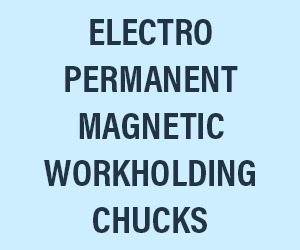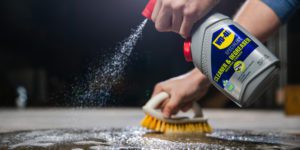HIGH-SPEED CUTTING OF SURGICAL INSTRUMENTS
How to achieve high-volume, high-quality production for this demanding market.
Posted: December 30, 2019
Most surgical instruments are made in small quantities with much manual labor. Their wide range of variants necessitates small batch sizes. Components are refined, surface-treated, and assembled by hand.
If you serve this market, your equipment and processes are designed for maximum retooling flexibility. But as one of my customers recently learned, it’s possible and profitable to exploit high-speed milling’s low shear forces, lower heat build-up, and better surface qualities to successfully produce these delicate products in large quantities.
COMPETING AGAINST JOB SHOPS
Founded in the 1980s and employing 130 people, this customer makes about 1,000 instruments for a wide range of surgical applications. All come complete and ready to use.
To remain competitive, about two years ago the company undertook an extremely challenging large-scale production project: manufacturing a one-time neurosurgery tool used so often that hundreds of thousands of units are consumed annually.
It’s an aluminum forceps that grasps tissue components while stopping minor bleeding with electrical pulses. Minute tubes through which irrigation fluid can be directed into the operating area are integrated into each arm.
All mechanical and manual work cycles must meet strict quality requirements. Many are performed under a microscope. Optimizing manufacturing equipment and processes required extensive collaboration, but today the factory makes two completely milled forceps halves in 3 minutes with almost no human intervention.
THREE-STEP AUTOMATION
The company bought a new horizontal machining center (HMC) to run the parts: Schwäbische Werkzeugmaschinen GmbH’s (SW) dual-spindle BA 321 horizontal machining center (HMC) with automated material-delivery and parts-removal, a custom feature we developed jointly.
The two spindles with HSK-A63 interface are movable in three axes. Spindle distance is 11.8 in (300 mm). They reach 17,500 rpm with an output of 32 kW (4200 rpm, 40% duty cycle) and 72 Nm (53 ft lb) of torque. Ball screw drives feed the unit, with rapid traverse axis reaching speeds of 65/75/75 m/min (X, Y, Z-direction) and axis acceleration rates of 10, 10, and 15 m/s2, respectively, with 8000 N maximum feed force.
The pickup tool-changing system ranges from 2×20 to 2×60. Tools 2.76 in (70 mm) in diameter (160 mm with free adjacent slot), 10.8 in (275 mm) long, and 16.5 lb (7.5 kg) can be picked up.
Chip-to-chip time is about 2.5 seconds. While intended only for a limited range of parts, it’s far more productive than the plant’s other HMCs within that range.
Special press-drawn sections in three dimensions are used as raw material. The forceps halves are carved out of the sections and not separated by sawing until the final work cycle, avoiding potential clamping damage to the extremely slender parts. To keep them from falling down and being damaged, the final saw cut is made so a minimal amount of burr remains.
Parts are removed by special adapters loaded into the spindles from the tool magazine. The adapters hold the parts and break off remaining burrs. Each part is then deposited on a transport drawer and conveyed by belt to the removal station, where it’s manually inserted into basket racks for the next work cycles.
LIFELONG MACHINE PARTNERSHIP
The customer chose this machine because of the double spindle’s productivity and our proximity, which would mean short response and travel times during development and for any service calls that might be needed.
We began exploring automation possibilities in summer 2017. Planning, design, setup, and trials lasted until June 2018. The necessary tools were implemented and an initial NC program was created during this phase. The machine is available with Siemens Sinumerik 840D sl, Bosch Rexroth IndraMotion MTX, or Fanuc 30i controls. Eighteen variants were programmed once the machine was installed in June 2018.
In addition to installation, startup, geometrical testing, and adjustment, our “life startUp” program includes sending an SW technician to the customer’s facility to provide oversight for a period of time. Thanks to production monitoring in the first week after commissioning in November 2018, employees quickly learned how to operate their new machine and were able to work independently with it.
Our life-services approach to machines also includes “life data,” whereby the machine is connected to SW to optimize operation by recording and analyzing essential parameters nonstop. Action is immediately taken if and when problems come up. Good use was made of this service, as the operator was supported by remote diagnostics.
Our 24/7 “life help” hotline for identifying and troubleshooting malfunctions via remote connection has also been put to good use. When issues arose, our specialists provided quick and competent consulting. If a service technician was needed, he was often on site for less than an hour. Without this service, issues would have taken much longer to resolve.
Production’s run 24 hours a day for six days a week since March 2019. The machine sometimes runs for up to a week with no human interaction other than supplying material and removing finished parts. The company ordered a second machine for delivery in August 2019.

















